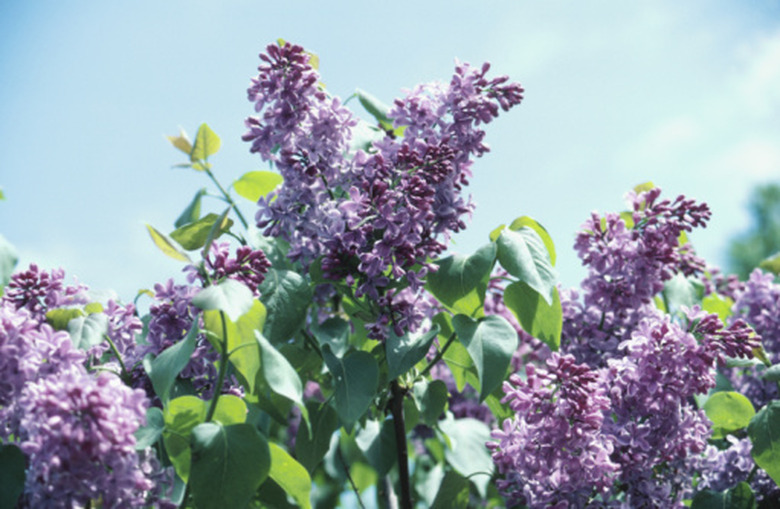The Best Time To Transplant A Lilac Tree
Hearty plants capable of growing for 40 years or more, lilacs can technically be transplanted most times of the year. However, your lilac is more likely to thrive if you take the extra effort to transplant after the plant blooms but before its leaves bud.
Identification
The best time of the year to transplant a lilac is when the plant is dormant, says John Fiala, coauthor of the book "Lilacs." Transplanting during this dormancy period helps ensure that the replanting process doesn't affect your plant's leaf growth and blooming during the following spring.
Time Frame
Be prepared to transplant your lilac during the fall or late summer months after the plant's blooming period has completely ended but before frozen ground becomes difficult to dig. Aim to transplant as early as July and August or as late as October and November, depending on where you live.
Considerations
Transplant your lilac to a full-sun or slightly shaded location that has well-draining soil. Since lilacs have shallow feeding roots, take extra care to include in the root ball as many of the surface roots as possible to minimize potential growth problems post-transplanting, recommends Fiala.
- Hearty plants capable of growing for 40 years or more, lilacs can technically be transplanted most times of the year.
- However, your lilac is more likely to thrive if you take the extra effort to transplant after the plant blooms but before its leaves bud.
References
- "Lilacs"; John Fiala and Freek Vrugtman; 2008
- "New England Gardener's Guide"; Jacqueline Heriteau and Holly Hunter Stonehill; 2002
